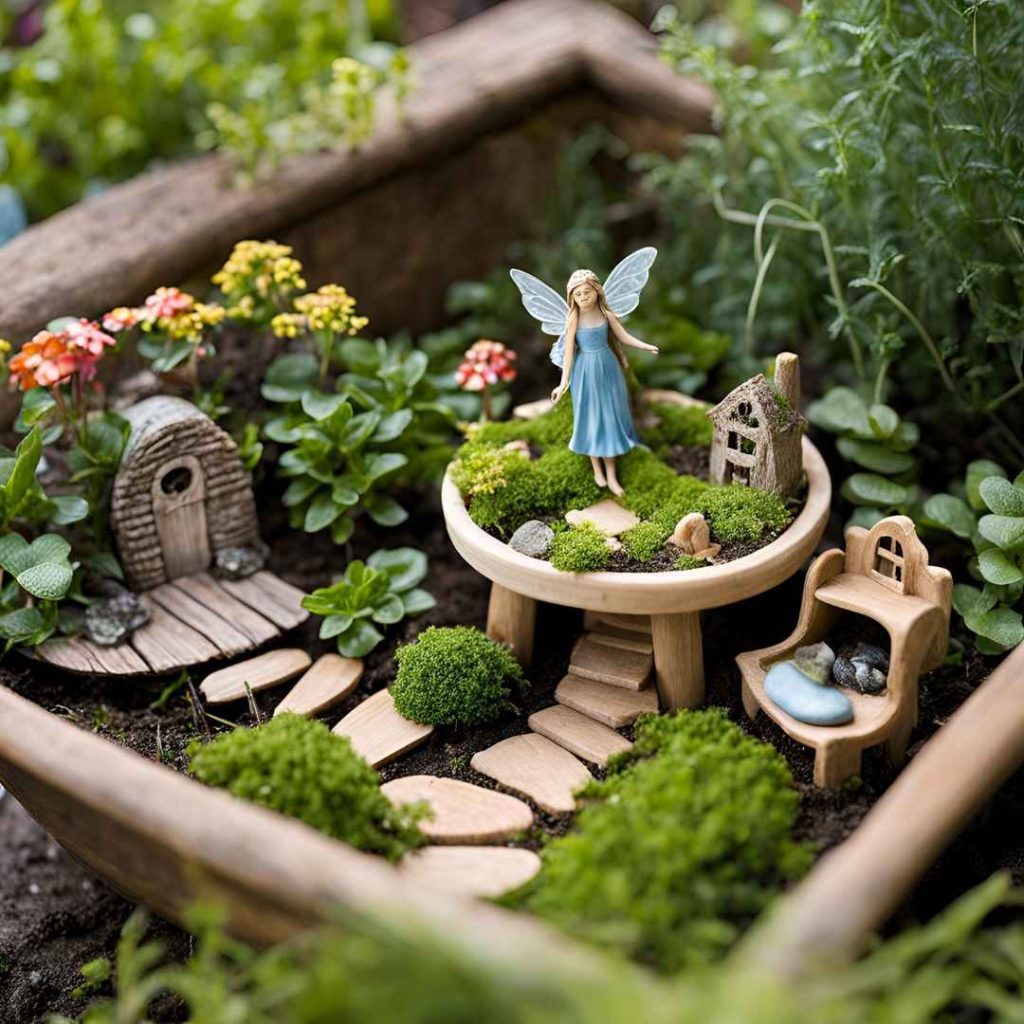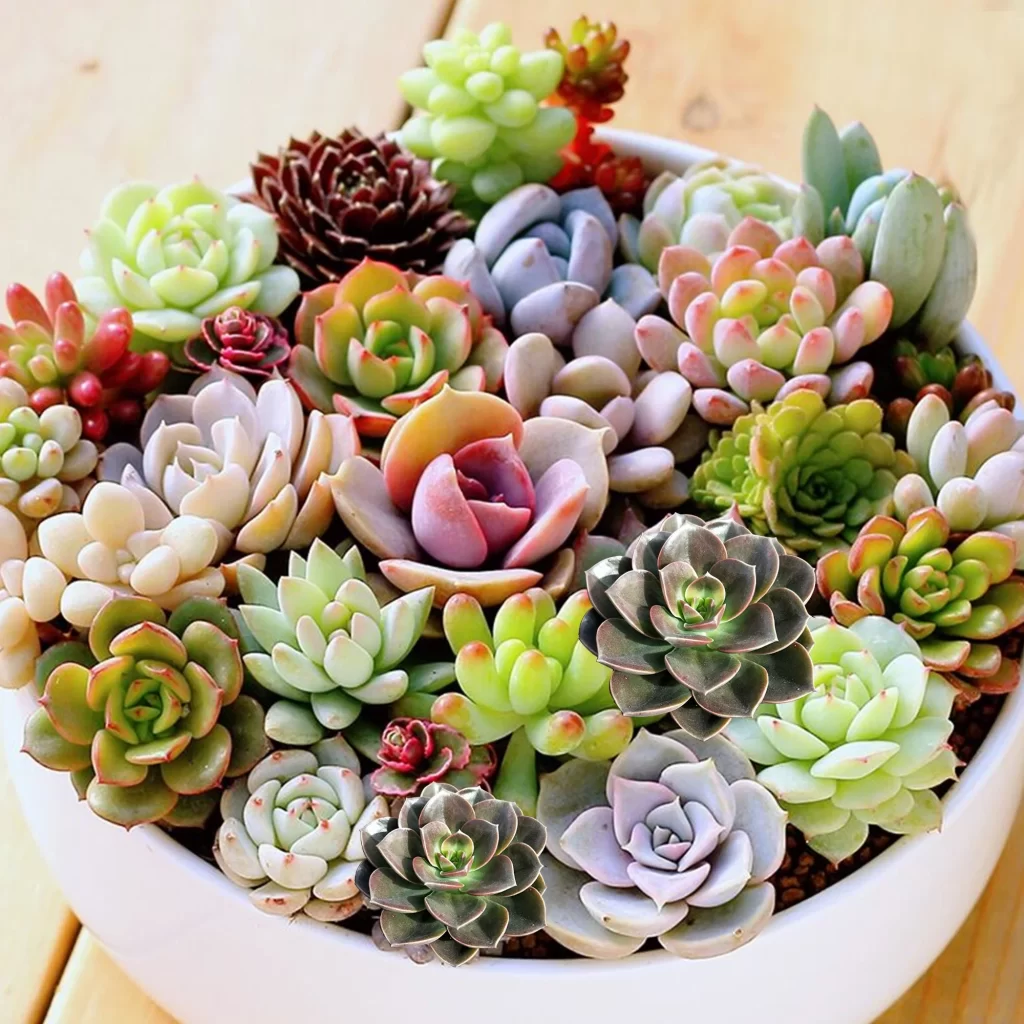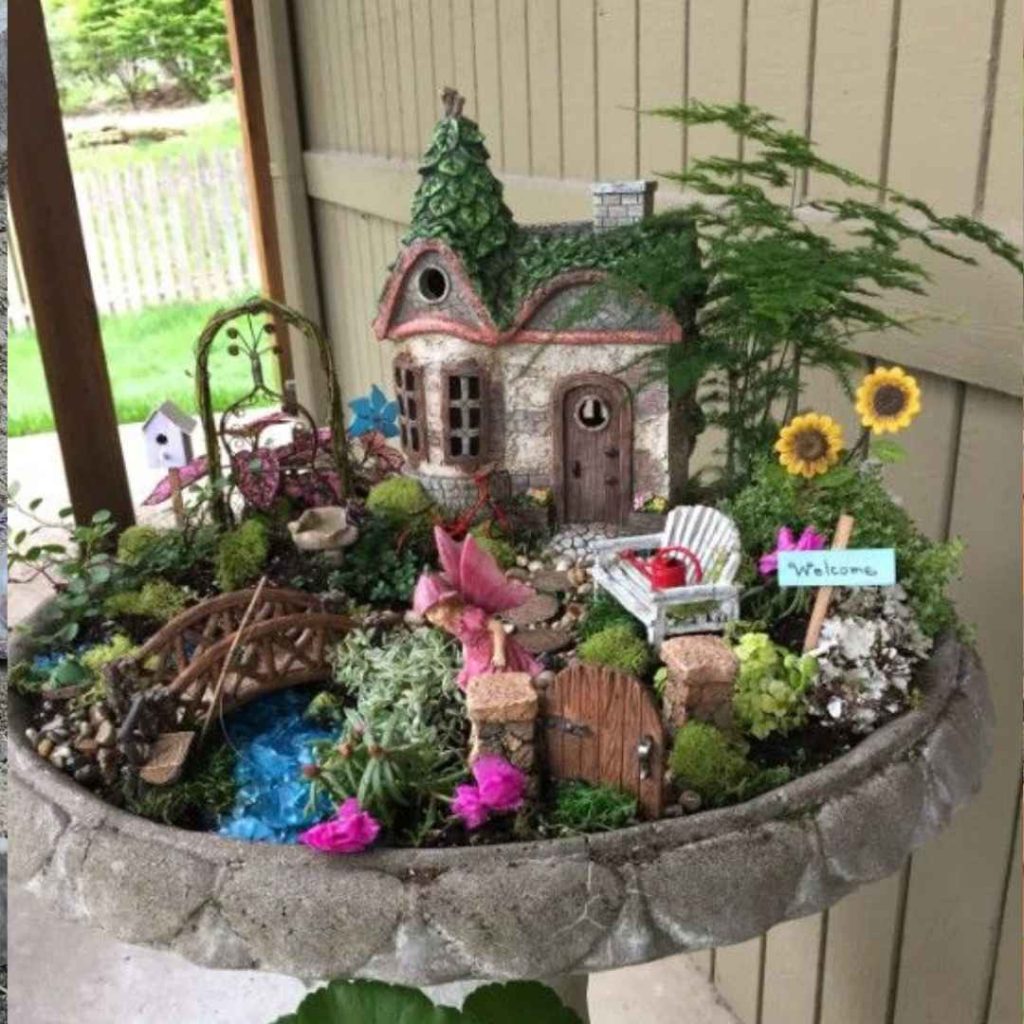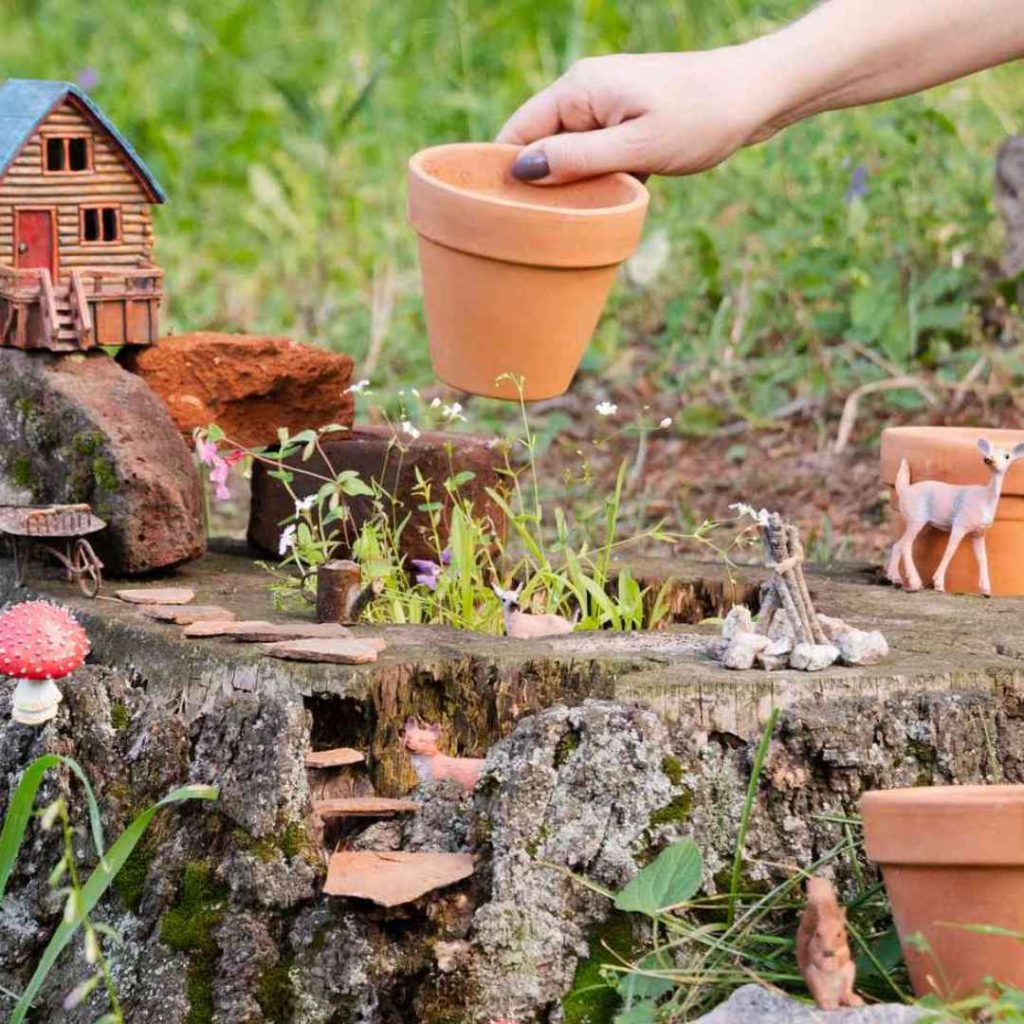From small fairy sculptures to furnishings expertly crafted from twigs and foliage, the small universe of fairy backyards is brimming with charming nuances. These small, detailed locations, which have their roots in storytelling, give your backyard landscapes an unique and creative touch.
Build a portable version of an enchanted landscape by building a homemade fairy garden out of discarded boxes or in a shaded recreational area, adding small blossoms and greenery, and finishing it off with small ornaments.
A Fairy Garden:

What Is It? With a strong basis in Deutschmark and Ancient tradition, fairy landscapes are assemblages of miniatures that frequently include furnishings, people, and growing plants.
Both seasoned and novice growers can improve their gardening techniques and find a stress-relieving alternative through the creation of miniature settings.
Because working with the substrate, plants, sculptures, and various other organic objects serves to balance the senses, it’s a terrific method for stress reduction. These magical dreaming universes’ minute details also bring back fond memories of children’s imaginative activity for many grownups.
Selecting a Fairy Gardening Theme:
Prior to starting construction, deciding on a concept for your fairy landscape will assist you focus on the essential components you will require. A framework will assist you stay on course as you schedule, vegetation, and adorn the landscape with gadgets.
It also gives your landscape a unified appearance that communicates a narrative to visitors, which represents one of the secrets of designing an enthralling fairy landscape.
Plant Species Fit For Fairy Landscapes:

Flora enhances the general impact of the setting and adds an attractive compliment to your additional fairy gardening items. Because they will appear more in proportion to the rest of your decorations overall, dwarfing and tiny vegetation are perfect.
Succulents, herbal products, and many types of ground-covering vegetation are also excellent options. When choosing plants for your outdoor space, start with those that are local to your temperature and terrain. They may create stunning periodic arrangements for fireplace decorations and kitchen table decorative elements.
Location:
Both indoor and outdoor settings are suitable for fairy landscapes. Using at-ground crops, they are easily created exteriors surrounding woodlands, beside branches, beneath hedges, or in any other semi obscured area.

Containers:
Drainage openings are also necessary if you decide to establish your landscaping in a vessel, such as a wagon next to your blooming rose arbor or a saucepan on your windowsill, that has a broad stroke and diameter of between eight and twelve inches.
The fact that you’ve got adequate root diameter is more important than the design. Which vegetation you may utilize in your fairy landscape will depend on this. Additionally, you require real tiny trees that are going to become too big for the pot.
Supplies:
You can buy ready-made or handcrafted fairy garden items. Using intriguing rocks, branches, blossoms, foliage, and treasures found in environment along with the residence, fairy growers can make their own do-it-yourself fairy dwellings and decorations.These discovered things will be twisted and shaped by enthusiasts into miniature couches, furnishings, and various small things.
Supplies Needed To Create a Fairy Landscape:

The ability to add details, adjust, and modify a tale as you build out the framework is a component of the allure of a fairy landscape. However, continue with these essentials before you commence:
Container
Planting dirt that is high in nutrients
Stones or pebbles for irrigation
Gadgets for gardening
Tiny vegetation
Fittings and miniatures lichen, foliage, stones, and other organic elements
Guidelines For Constructing a Fairy Landscape:
Pick a planter and decide whether to grow vegetables indoors or outside.
Select plants and blossoms according to the dimensions of your planter and how much sunlight it receives.
Assemble the shapes, fairy creatures, and other extras you choose to use.
Draw out your backyard’s design. You may make several settings based on the dimensions of your receptacle or area.
Considering each scenario as an independent space in your fairy landscape barbie house might prove useful.
Fill the receptacle with topsoil and draining pebbles.
I suggest adding fertilizer or peat moss to your garden before seeding if you’re doing it outdoors.
Don’t place the crops on the foundation of the ground; instead, stagger them. This enables you to make graphic adjustments prior to settling on an ultimate plan.
Embed the vegetation in the dirt after moistening it and digging a tiny trench with a gardening spade.
After establishing, moisten and wrap the base of the plant. Use rocks, sea glass, gemstones, and other materials to create additional landscaping amenities, such as streams, pathways, or walks.
Put all of your belongings and figures in the backyard. To keep your landscaping in good condition, irrigate it sparingly and trim or move any unwanted species.
